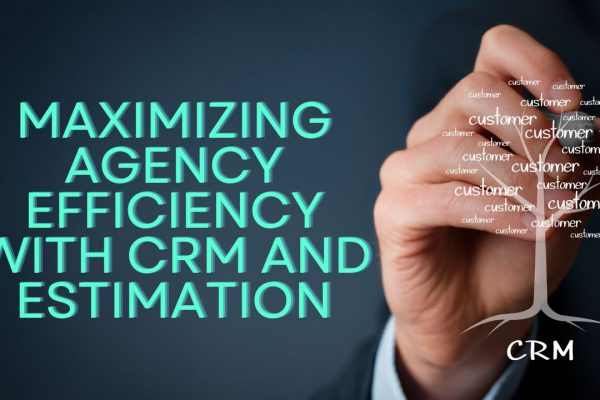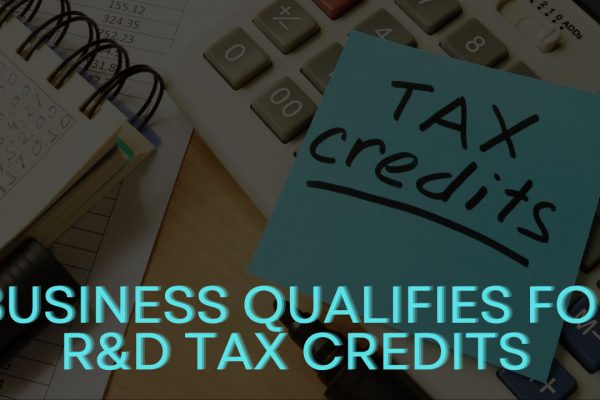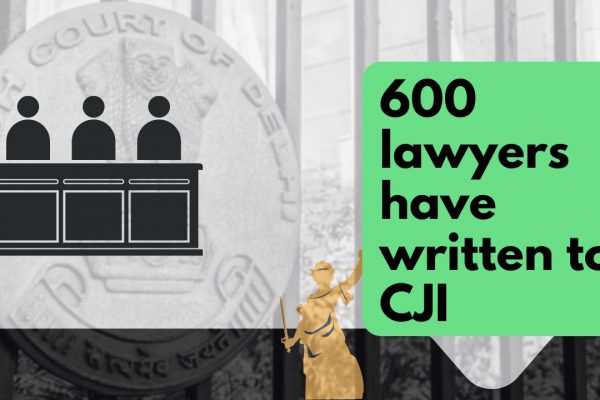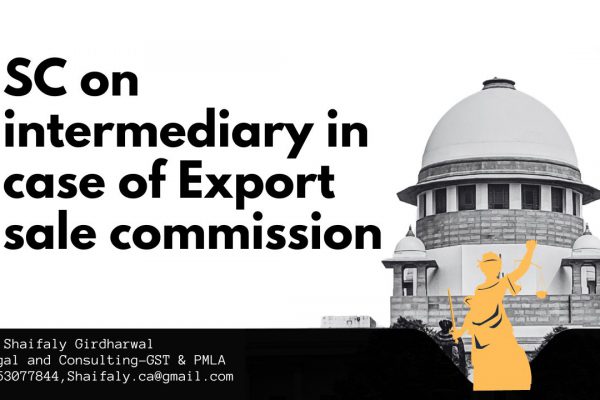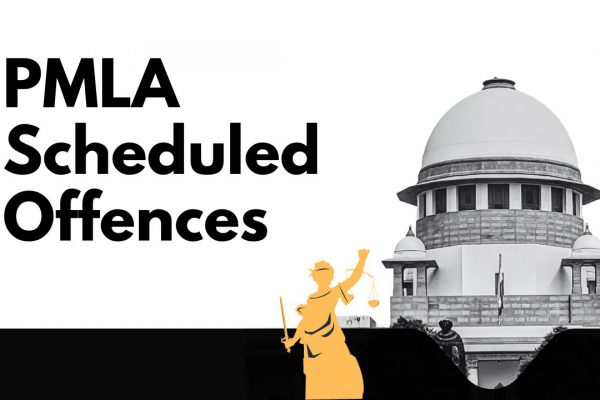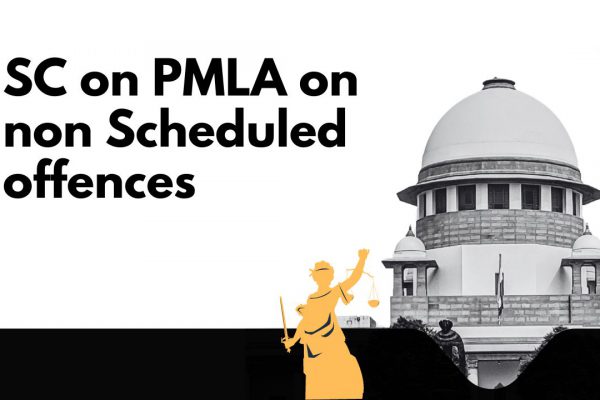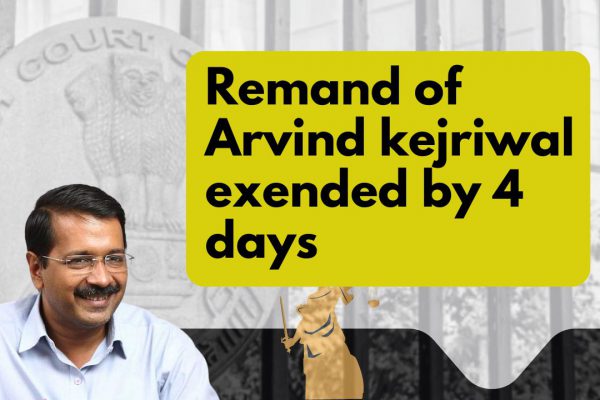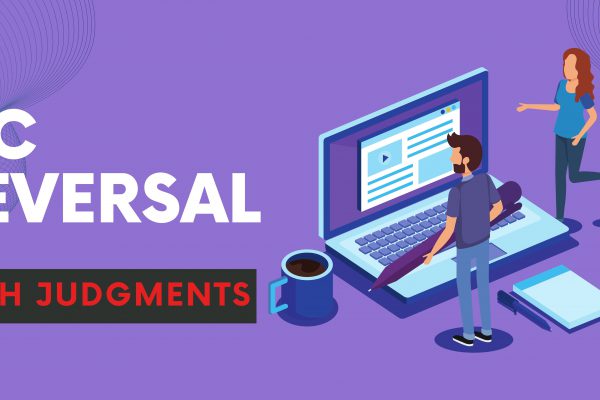Guidance note on CGST Transitional credit
Guidance note on CGST Transitional credit
- Introduction:
Provision for transition of pre-GST era credit of Central Excise and Service Tax are contained in section 140 of the Central Goods and Services Act, 2017 (hereinafter referred to as the “CGST Act”). It may be noted that taxpayer base of both Centre and State have undergone change due to implementation of GST. Further many taxes have got subsumed under GST. Thus, there would be various situations where transition of credit would need to be verified. Preliminary verification process is already over in most zones and now a more detailed exercise may be needed in some cases.
1.2 Two fundamental principles should be kept in sight while the transition credit is verified. Firstly, only such CENVAT credit can be taken as credit of CGST in the electronic credit ledger by filing TRAN1 for which explicit legal authority exists in section 140 of CGST Act. How much credit should be transitioned is a matter of policy and has been appropriately legislated. There can be no transition of any kind of credit by reading policy intention into the law.
Secondly, same CENVAT credit cannot be availed as transitional credit twice. This can happen in situations such as, availing CENVAT credit as transitional credit through TRAN 1 and also through return in FORM GSTR 3B or availing same credit twice through two different tables of Form TRAN 1.
1.3 One more factor which needs to be verified is the growth of CENVAT credit in the period September, 2016 to June, 2017. During this period steep increase in credit claim has been noticed for some taxpayers. Accordingly, it has been decided to collect information from this small category of taxpayers, and verify the correctness of credit availed by them by checking the tax payment by their suppliers. Appropriate legal sanction for collection of such information is being examined so that such taxpayers are bound by law to provide the requisite information. Details on this follows in the subsequent paragraphs of the guidance note.
2. Description of Entries in TRAN-1 Table
In the Form TRAN 1 there are only six entries which decide all the CGST credit which is posted in the electronic credit ledger. These entries are briefly described below. It is advised that the full text of law be referred for better understanding of the issue.
|
S. No. |
Table No. in TRAN-1 |
Provision in CGST ACT |
Indicative list of nature of credit |
|
|
1. |
Col. 6 in table 5(a)
|
140(1), 140(4)(a) and 140(9) |
This table captures detail of the CENVAT credit carried forward in the return (ER-1/2/3 or ST-3) relating to the period ending with 30.06.2017, subject to conditions specified in section 140(1) of CGST Act, by the manufacturers/ service providers. |
|
|
2. |
Column 11 of table 6(a)
|
140(2)
|
This table captures details of un-availed credit of capital goods in the pre-GST era. Capital Goods credit was allowed to be availed in two installments of 50% each. This table is meant to be used by the taxpayers who have availed a portion of CENVAT credit on capital goods through ER or ST return and now intend to avail remaining credit in respect of capital goods which has not been availed through the ER or ST return.
|
|
|
3. |
Table 7(a)
|
Column (6) in Entry 7A in Table 7(a)
|
140(3), 140(4)(b), 140(6) and 140(7)
|
This table pertains to credit claim by new taxpayers or taxpayers who were either not registered or were not part of CENVAT Credit chain earlier. Here, Credit can be claimed in TRAN-1 in respect of inputs held in stock and inputs contained in semi-finished or finished goods held in stock on the appointed day based on invoice/ document evidencing payment of duty (including CTD), subject to fulfilment of other conditions specified in section 140(3), 140(4)(b), 140(6) and 140(7) as the case may be. |
|
Column (6) in Entry 7B in Table 7(a)
|
Proviso to Section 140 (3) and Rule 117(4) of CGST Rules
|
This table pertains to credit claim by new taxpayers (e.g. traders) who were not manufacturers or service providers. Deemed credit @ 60% of Central Tax applicable where CGST is 9% or more, and 40% where CGST is less than 9% can be availed. The provision applies where the assessee is not in possession of an invoice or any other documents evidencing payment of duty in respect of inputs only. [In this case the Electronic Credit Ledger gets populated through TRAN-2 and not through TRAN 1]. |
||
|
4. |
Column (8) in Table 7(b)
|
|
140(5), 140(7)
|
This table captures transitional credit taken on such inputs or input services which were received after 1st of July, 2017 but taxes on which were paid under the existing law (Goods/ Services in Transit). It does not apply to capital goods. This table also captures credit distributed by the Input Service Distributor. |
|
5. |
Column 9 in Table 8 |
140(8)
|
This table pertains to Centrally Registered unit, the Cenvat credit carried forward in their last return is captured in table 5(a) and a part or full of such credit can be distributed through table 8. The credit distributed through column 9 gets credited in the electronic credit ledger of the receivers and a corresponding debit entry in made in the ledger of the Centrally registered unit. |
|
|
6. |
Column (7) in Table 11
|
Section 142 (11)(c) read with Rule 118 of CGST Rules
|
Transition of credit in respect of supplies which attracted both VAT and Service Tax in pre-GST era and where VAT and Service Tax both were paid, before 1st July 2017, on any supply but the supply is made after 1st July, 2017. The taxable person is entitled to take as CGST credit, the service tax paid under the existing law to the extent of supplies made after 1st July, 2017 as he would be liable to pay CGST in respect of such supplies. (VAT credit cannot be taken as Service tax credit and vice versa). |
|
3. CHECKS FOR VERIFICATION OF ENTRIES IN TRAN-1 TABLE:
As a matter of assistance, following checks are suggested in relation to the entries provided in various tables of TRAN 1. The list of checks is not exhaustive but is indicative only based on provisions of law, the likely error and the inputs received from the field formations on the preliminary verification of the Transitional credit.
4. Checks for Table 5(a):
4.1.1 Check 1: Verify that the credit has been taken against closing balance of CENVAT credit in ER-1/2/3 or ST-3. Credit can be taken only where the last return was filed and credit taken in Table 5(a) should not be more than closing balance of credit in ER-1/2/3 or ST-3 minus the education / secondary education cess / KKC/ SBC.
4.1.2 There are large numbers of taxpayers who have taken Credit only in Table 5(a) and the credit is correct as per the check done at the backend. Such taxpayers should not be disturbed as the entire verification is possible as the backend. However, for those taxpayers having growth higher than 25% and credit availed higher than Rs. 25 Lakhs, procedure as at para 11.2 shall be followed.
4.2: Check 2: Credit of taxes not covered in the definition of eligible duties in section 140 cannot be availed. Example: Krishi Kalyan Cess, Education Cess, etc. Instances have also come to notice where credit of VAT and PLA balance has been availed as transitional credit. This is not allowed in law.
4.3: Check 3: Check that returns have been filed for last 6 months. An assessee filing TRAN1 and taking credit in table 5(a) should have –
a) Filed ER-1 or ER-2 regularly between Jan, 2017 and June, 2017 or
b) Filed ER-3 for period ending March, 2017 and June, 2017 or
c) Filed ST-3 for period ending March, 2017 and June, 2017.
This check should be performed liberally where many units have merged into one registration or a single unit has been split into many (Centralised registration cases / LUT units) in GST. Compliance by any of the merging unit which was filing the returns in the pre-GST would entitle the new unit to avail credit in relation to that merging unit.
5. Checks for Table 6(a):
5.1 Check 4: Check that in table 6 only credit on capital goods not availed in any return is taken. If second installment of any capital goods credit is taken through return in table 5(a) and again the details are filled in table 6, it would lead to double credit getting taken. For example, the second installment of capital goods credit where first installment credit was availed in 2016-17 and second installment can be availed in the financial year 2017-18, provided the second installment was not availed in any of the returns filed in the first quarter of 2017-18 under Central Excise or Service Tax. If no credit was availed earlier, credit of entire amount cannot be availed through this Table.
5.2 Check 5: For some of the invoices involving large credit, if the invoice date is very old, please take confirmation from assessee that the capital goods are in existence in the place of business.
6. Checks for Table 7(a), Entry 7A:
6.1 Check 6: In cases where the credit is being shown by an assessee who was registered in Central Excise or Service on account of inputs relating to exempted goods, carefully check whether the assessee has followed the provisions of rule 6 in the period prior to GST.
Case I: Only exempted goods/services were being manufactured or provided: Rule 6(2) of CENVAT credit rules did not allow any credit in the CENVAT register if only exempted goods were being manufactured. No credit can flow from return in relation to inputs in such cases. The entry in table 5(a) therefore should be NIL. The apportionment of credit on inputs and complete reversal thereof under rule 6 took place at the time of removal of goods. Therefore, in such cases only credit of inputs and inputs contained in semi-finished which existed in stock on the day of the transition and for which conditions prescribed in cl (i) to (v) of section 140(3) are satisfied would be available. Where the stock shown is very high, verification using VAT return or any other collateral document where stocks are declared can be done.
Case II: Exempted and non-exempted goods/services were being manufactured or provided: Rule 6(3) of the CENVAT credit rules provided the procedure for apportionment of credit relating to taxable goods/services and reversal of credit relating to exempted goods/services. Credit in table 5(a) would flow from the return in such cases. It should be checked that the return reflects credit after application of rule 6(3). The reversal in terms of rule 6(3) was required to be done at the time of removal of finished goods. Therefore some credit in Table 7A can arise for such inputs which were in stock and which not attributed till the date of the transition to either exempted goods or non-exempted goods. To avail credit on such inputs, other conditions prescribed in cl (i) to (v) of section 140(3) are required to be satisfied. Where the stock shown is very high, verification using VAT return or any other collateral document, where stocks were declared, can be done.
6.2: Check 7: In cases where a new taxpayer has availed credit using Credit Transfer Document, check that CTD issued by the manufacturer exists and CTD has been issued in terms of rule 15(2) of CCR, 2017 read with notification no. 21/2017-CE (NT) dated 30.06.2017 (Capital Goods having value more than Rs. 25,000, goods to be identifiable by a distinct number etc.). Eg. : Dealers of new car.
7. Checks for Table 7(a), Entry 7B:
7.1 Check 8: Check that credit on stock declared on which credit can be claimed in terms of rule 117(4) of the CGST Rules, 2017 are reasonable. Where the stock declared in very high, stock declared in VAT return or any other collateral document, where stocks were declared, may be cross-checked. It may be noted that credit of this stock would be available on sale being made and TRAN 2 return being filed. It is reiterated that electronic credit ledger would get populated through TRAN-2 and not through TRAN-1.
7.2 Check 9: Check that assessee has not declared this stock in any other table or has not availed this credit from any other table, say table 5(a). Where the person availing credit through TRAN 2, for which stock is declared in this table, is a trader, no credit can exist in any other table which pertains to credit to taxpayers who were registered earlier [e.g. Table 5(a)].
8. Checks for Table 7(b):
8.1 Check 10: Check that the duty paying document exist and take confirmation from the taxpayer that the duty or the tax paying document were recorded in the books of account of such person as per the conditions prescribed in law. Where goods under movement are shown in exorbitant quantity, transport verification may be considered. It should also be checked that the condition for availing ISD credit as prescribed in law are satisfied.
9. Checks for Table 8:.
9.1 Check 11: Centralised registered units have distributed their credit through table 8. The units receiving the credit were not required to file TRAN1 to receive this credit. The receiving units have got credit on the basis of credit distributed by the Centrally registered unit. Check that receiving units have not filed TRAN 1 to avail this credit as this would lead to double credit to receiving unit. Also take confirmation from the Centrally registered unit that resultant credit in the ledger of the distributing Centrally registered unit was reduced by the amount of credit distributed through Table 8.
10. Check for Table 11:
10.1 Check 12: Check that the service tax claimed as credit was indeed paid under the existing law and supplies were indeed made after 1st July, 2017. Credit of VAT cannot be taken as CGST credit and vice-versa.
11. General check:
11.1 Check 13: Check that credit which can be taken legally through TRAN 1 is not taken through return in FORM GSTR-3B. This can lead to double credit being taken. If there is no double credit and only procedural irregularity that credit was taken through GSTR 3B which should have been taken through TRAN 1, before the closing date of filing of TRAN 1, i.e. by 27/12/2017, the taxpayers may be directed to submit a statement of reconciliation of credits and credit regularised where otherwise admissible as per the law.
11.2 Check 14: Taxpayers who have availed transitional credit greater than Rs. 25 lakh and where the closing balance of CENVAT credit during the period of 1st of October, 2016 to 30th of June, 2017 has grown by 25% or more may be directed to prepare a statement of purchases during this period in the format as below. This verification return would be required to be filed by a date to be notified. IT facility for filing this growth return would be shortly provided. A list of taxpayers where such verification return would be required to be filed is uploaded on Antarang. The taxpayers in this list need special attention and verification as the credit growth is quite unreasonable. At present it would be adequate to keep the taxpayer sensitised that such a return would be required to be filed in the following format so that he gets adequate time to prepare the same.
|
Name of the registered person.
|
|||
|
Registration Number in Central Excise or Service Tax who has claimed TRAN Credit.
|
|||
|
Period of return: 01/10/16 to 30/06/17
|
|||
|
Name of the supplier under Central Excise or Service Tax
|
Registration number of the supplier under Central Excise or Service Tax |
No. of invoices on which credit was taken
|
Central Excise duty or Service tax shown as having been paid in their invoices |
|
|
|
|
|
In relation to taxpayers whose credit growth would be verified as above, they may be advised to confirm from the suppliers of goods and services on whose invoice credit has been taken, that the said supplier had declared the goods and services in their respective returns and had paid tax thereon.
12. Jurisdiction:
CGST officer of the Central Government shall have the jurisdiction for verification of Transitional Credit of CGST irrespective of whether the taxpayer is allotted to the Central Government or the State Government for the purposes of GST. This is because, TRAN Credit verification process can only be done by the tax authority which had legal jurisdiction under the erstwhile law and also has the requisite past record of the taxpayer.
13. Procedure for Verification
13.1 The foremost effort should be to verify the TRAN Credit on the basis of data already available with the department without contacting the taxpayer. Where such verification needs contact with the taxpayer, a letter may be written giving adequate lead time and calling for specific information which would assist in verification as per the fourteen checkpoints listed above. Most verification can be carried out on the basis of records and should be carried out in the Commissionerate itself, after obtaining the information without visiting the taxpayer.
13.2 Summon should be issued only where the taxpayer is not sharing information even after repeated requests and lapse of an unreasonable period of time.
13.3 Enforcement action can be initiated only where the transitional credit is very high and not congruent with the economic activity of the taxpayer, the said taxpayer is not cooperating with the verification even after giving adequate opportunity, there are other collateral evidence of wrong availment of TRAN Credit and there are chances of his disappearing after utilising the credit.
14. Method of reversal of credit/recovery:
Circular is being issued by the GST Policy Wing prescribing inter alia the procedure for the reversal and recovery of credit. The same may be followed during the verification process of the transitional credit.
15. Data availability:
15.1 TRAN and Return data should be available on AIO. However, as an additional facilitation measure, five sets of data have been uploaded on Antarang at the address, https://antarang.icegate.gov.in/communities/community/home#fullpageWidgetId=We69ecb13d927_4bce_bed5_7f8a03972fd6&folder=%257B4A0B14E2-41FD-4499-8E88-C54143751D76%257D
namely –
(i) TRAN-1 data in respect of top 50,000 taxpayers in terms of availing TRAN Credit Data entered in individual tables and the total CGST credit posted in their ledger has been provided in this data table.
(ii) Past data pertaining to closing balance of CENVAT credit, as per ER-1/ST-3 returns, is also uploaded for the same PAN as they appear in the 50,000 GSTINs relating to data above (i), has also been uploaded.
(iii) Many times one registration of pre-GST era can get converted into many and vice-versa and therefore PAN wise summary of the closing balance of credit has also been uploaded vis-a-vis TRAN credit availed.
(iv) Taxpayers who have shown steep growth in credit over 25% and have availed credit of more than Rs. 25 lakh amongst this list of 50,000 top TRAN credit takers has also been uploaded. Reason for this excessive growth may be ascertained and informed in due course to the Board.
(v) List of taxpayers who have taken registration between 1st October 2016 and 30th June 2017 and are entities other than limited companies (i.e. these taxpayers lie in the category of proprietors, LLPs, HUFs etc)
15.2 A brief write up on the nature of the data uploaded is enclosed as Annexure-B.
16.1 Time line and manpower:
It is proposed to keep credit verification both transitional and regular as a focus area in the year 2018-19. Therefore, it would be desirable to plan the activity of verification for the entire year. Accordingly the verification may be divided in four groups and in four phases the verification completed. It is expected that the verification would be completed not later than the timelines suggested below:
|
S. No. |
Phase |
Quarter |
Priority Area |
|
1. |
I |
March-June 2018
|
Taxpayers who have taken registration between 1st October 2016 and 30th June 2017 and taxpayers who have shown steep growth in credit over 25% and have availed credit of more than Rs. 25 lakh amongst the list of 50,000 top TRAN credit takers [clause (iv) and (v) of para 15.1] |
|
2. |
II |
July-September 2018 |
Top 1/3rd in terms of quantum of TRAN Credit availed |
|
3. |
III |
October-December 2018
|
Next 1/3rd in terms of quantum of TRAN Credit availed |
|
4. |
IV |
January-March 2019
|
Bottom 1/3rd in terms of quantum of TRAN Credit availed |
16.2 Chief Commissioners may divide the work between Executive and Audit Commissionerate to achieve the best possible results. Record of results obtained may be maintained in the Commissionerate and reported to the Board in the format enclosed for each of the four phases conducted. Record of results obtained may be maintained in the Commissionerate and the compiled report from the zone reported to the Board the following format:
|
Name of the Zone/ Commissionerate |
No. of verification carried out |
TRAN Credit irregularity detected |
TRAN credit irregularity reversed |
|
Zone |
|
|
|
|
Breakup Commissionerate wise |
|||
|
Commissionerate |
|
|
|
17. Self-assessment and correction:
Taxpayers can be informed about the precise checks the department intends to carryout either through a communication or trade notice as felt convenient. The checks in the Guidance Note can thus be shared with taxpayer. Taxpayers should be encouraged to take corrective action on the excess TRAN Credit taken in terms of the law.
18.1.1 Decisions of the GST Council:
Following important decisions were taken in relation to CGST transitional credit:
18.1.2 It should be clarified that-
i) Taxpayer shall not avail of credit in cases under dispute (disputed credit) under the transition provisions.
ii) Taxpayers shall not avail of any credit which has been blocked under sub-section (5) of section 17 of the CGST Act.
18.1.2 Accordingly a circular no. 33/07/2018-GST dated 23.02.2018 on the above issue has been issued. The same may be followed during the verification process of the transitional credit.
18.2.1 Section 140 of the CGST Act may be amended to specifically provide that transition of credit of „cesses‟ under section 140 shall not be allowed.
18.2.2 Appropriate action in this direction would be taken whenever the CGST Act is amended next. You may keep this direction in view while verifying transitional credit.
19. All past instructions stand withdrawn on the subject and future verification shall be done in terms of this guidance note. For taxpayers who have been verified in terms of past letters of the Board, further verification shall be conducted only to the extent that such verification has not been conducted earlier. No verification should be duplicated on any taxpayer.
If you already have a premium membership, Sign In.
 ConsultEase Administrator
ConsultEase Administrator
Consultant
Faridabad, India
As a Consultease Administrator, I'm responsible for the smooth administration of our portal. Reach out to me in case you need help.



